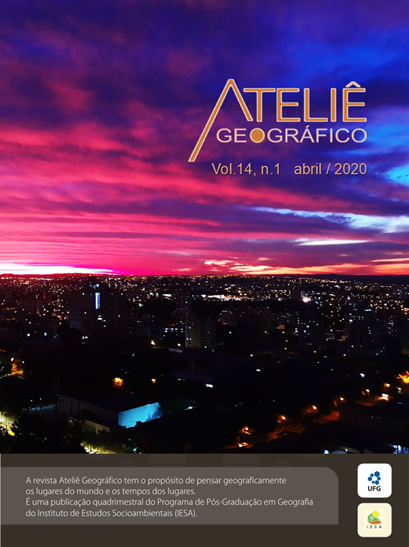Contribution of the geoindicators as a tool in the identification of the erosive processes associated to Anthropogeomorphology
DOI:
https://doi.org/10.5216/ag.v14i1.57150Abstract
Changes in anthropogenic sources identified in the processes of urban expansion, suppression of vegetation, soil sealing, changes in the drainage cycle and their influence on the diversity of environmental systems are characterized as aspects that can generate negative environmental impacts. From this theme, it is necessary to develop techniques that make possible the comprehension of the temporal extension of these modifications. Since then, the proposal for the use of more specific geoindicators has been widely considered within the scientific community as a method to aid in the recognition of the probable changes identified in the landscape, space and temporal scales that can contribute to the identification of probable environmental impacts and/or in the planning of mitigating actions. Thus, the present article aimed to understand the role of geoindicators in the identification of probable changes originating from anthropogenic actions in urbanized environments. In addition, it proposes to present and discuss the different proposals of geoindicators that can be used in the identification of hydrogeomorphological modifications diagnosed in urban areas.
Keywords: Geoindicators. Anthropogenic geomorphology. Urbanization. Anthropogeomorphology.
Downloads
Downloads
Published
How to Cite
Issue
Section
License
Autores que publicam nesta revista concordam com os seguintes termos:- Autores mantém os direitos autorais e concedem à revista o direito de primeira publicação, com o trabalho simultaneamente licenciado sob a Licença Creative Commons Attribution que permite o compartilhamento do trabalho com reconhecimento da autoria e publicação inicial nesta revista.
- Os autores não serão remunerados pela publicação de trabalhos na Revista Ateliê Geográfico. Além disso, os conteúdos publicados são de inteira e exclusiva responsabilidade de seus autores, ainda que reservado aos editores o direito de proceder a ajustes textuais e de adequação às normas da publicação.
- Autores têm permissão e são estimulados a divulgar seu trabalho online (ex.: em repositórios institucionais ou na sua página pessoal), já que isso pode gerar alterações produtivas, bem como aumentar o impacto e a citação do trabalho publicado (Veja O Efeito do Acesso Livre).


